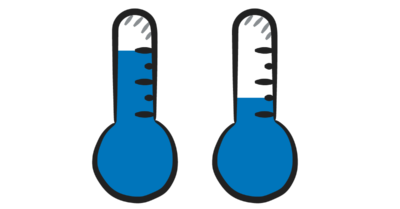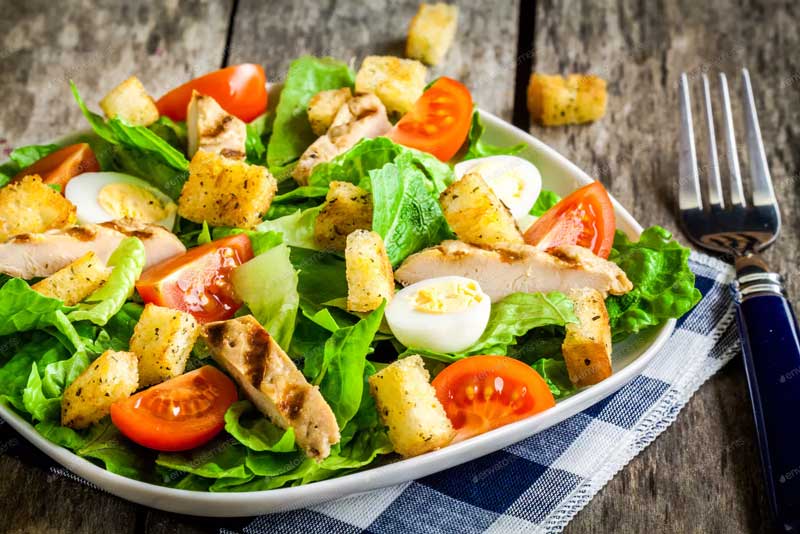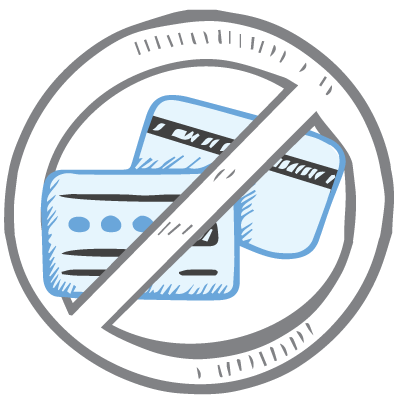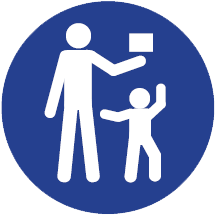
FAQ
I’ve spent a lot of time on the phone this week talking with a food manufacturer who is undergoing HACCP certification. He has Clever Logger monitoring his coolrooms and freezers but his HACCP inspector is telling him they are faulty because they don’t match the temperature on her thermometer. Surely measuring the temperature in a coolroom is a simple thing. Why don’t the two devices agree on temperature?
Cool rooms, fridges and freezers all work pretty much the same way…
If you are using a temperature logger, you can see this cycle illustrated on your temperature graphs. See Figure 1.
If we zoom in on the graph to take a look at three data points, you can see that in the space of 10 minutes, there is a temperature change of nearly 2°C. See Figure 2.
So imagine you used a thermometer to take a single reading of, for example, 3.2°. Then, a few minutes later, you grabbed a logger data point that said it was 5.1°, you would think that one of the devices was wrong.
Neither reading is wrong. They are just taken at different points in the temperature cycle.
A-ha. But what if you timed the thermometer reading at exactly the same time as the logger reading? Then they should read the same, right?
Nice try. But you haven’t factored in the latency of the two devices – that is, the time between when a temperature change occurs and when that change registers with the device’s sensor. The thermometer might have an exposed metal tip that reacts almost instantly to temperature change and is susceptible to air flow. The logger’s sensor is inside a hard plastic case where there is no air flow. It will take much longer to react, and it may not react as much.
So again, you would get two different readings, neither of which was wrong.
In my last job, I worked in a big office in the city. The important people in the company sat along the window while I had a smaller space halfway between the comms room and the compactus.
I was also right under an air conditioning vent. So while the window sitters were complaining about the afternoon sun beating down on them, I was reaching for another jumper.
In any space, there will be temperature fluctuations. In small, well-regulated spaces such as vaccine fridges, these are minimised, but still there.
In domestic fridges, there is less control. Figure 3 compares readings from two loggers in the same domestic fridge (mine). One logger is in the fridge door, while the other is at the back of the cabinet.
Remember, these loggers are in the same fridge, less than a metre apart.
In a large commercial coolroom, the temperature variations can be even greater. At any one moment, a sensor near the door can show as much as 5° difference in temperatures as one near the back, or another surrounded by pallets and out of the air flow.
All three readings would be right.
Clever Logger has a digital sensor that is accurate to 0.5°C, which is fairly standard across brands, and way more accurate that most older analog sensors.
But it does mean that, if the Clever Logger gives you a temperature of 3.0°, the actual temperature could be anywhere from 2.5° to 3.5°.
If you had two devices with this level of accuracy and placed them in an environment of exactly three degrees, one could tell you it was 2.5° and the other could say it was 3.5°.
And both would be right (within the limits of their accuracy).

The answer as to why two devices don’t agree about temperature is most likely to be a combination of the factors above – a sort of inaccuracy salad.
The most important thing to understand is that temperatures fluctuate. Rather than worrying about a stray reading here and there, look for a consistent average temperature.
If that average is too high or too low, adjust your fridge. If the peaks and troughs are outside your limits, adjust the timing of your thermostats.
If the temperature fluctuations are wild, move your logger or put it in a box to get it out of the air flow.
Once thing you should never do, is adjust your logger’s readings to match what you want it to say or what another device is reading. That is using your logger the way that a drunk uses a lamp post – for support rather than illumination. If you believe your logger is faulty, discard it and get another one.
Clever Logger is sold to government departments, public and private hospitals, and other large corporations. We understand that it’s often not possible to purchase with a credit card on a web site.
Call us on 1300 80 88 89 or send an email to [email protected] and we’ll send you a written quote. We are happy to send out most orders on receipt of a verified purchase order.


All prices are in Australian dollars and include GST

KEEP BATTERIES OUT OF REACH OF CHILDREN
Clever Logger loggers are intended for commercial use only. They contain small batteries. Swallowing can lead to chemical burns, perforation of soft tissue, and death. Severe burns can occur within 2 hours of ingestion. Seek medical attention immediately.
To prove it, we’ll send you a Starter Kit to try out for a whole month.
Set it up, have a play, explore the features – obligation free.
If you love it, just let us know.
If not, just send it back.

The National Association of Testing Authorities (NATA) is the recognised national accreditation authority for analytical laboratories and testing service providers in Australia. It is an independent, not-for-profit organisation that provides independent assurance of technical competence.
NATA accredits organisations to perform testing and inspection activities for their products and services. This gives consumers the assurance they need to make safe, healthy and reliable choices .